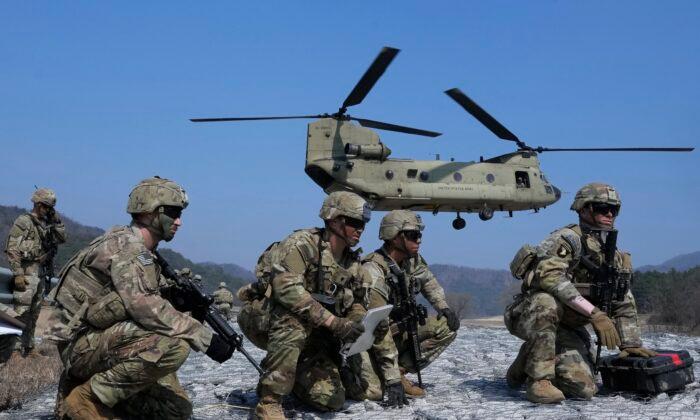Hundreds of Army aviation officers who have been making plans for life after the military were surprised recently when they were informed that their contracts require an extra three years of service—an extension for which many had not planned.
Between 2008 and 2020, cadets commissioning from the U.S. Military Academy (USMA) or Army Cadet Command were able to improve their chances of getting a preferred military assignment by signing what’s known as a Branch of Choice Active Duty Service Obligation (BRADSO) contract. These BRADSO contracts entail signing on for an additional three years of active duty service in exchange for the increased chance of receiving a preferred assignment.
Up until recently, there had been some confusion about whether the BRADSO contracts allowed officers to serve their three-year special commitment concurrently with their existing military obligations, or consecutively, as an added three years beyond their existing military service obligation—known as their Active-Duty Service Obligations (ADSO). USMA graduates typically have a five-year ADSO, while officers who come up through the Army Cadet Command typically have a four-year ADSO.
The confusion over the BRADSO terms impacts Army aviators because it takes longer to train them than it does other military assignments. For this reason, Army aviators typically incur a six-year ADSO. Adding to the confusion, some Army aviation personnel who had signed BRADSO contracts were allowed to serve out the three-year term on their contracts concurrently with their ADSO terms.
The confusion about these contract terms had gone on for years. Recently, however, the Army began telling service members that they are expected to serve their three-year BRADSO terms consecutively to their existing service obligations.
“The BRADSO contract we signed as Cadets (USMA FORM 5-50-B or CC 597-B for ROTC) is no place to look for clarification as it is ripe with contradicting statements,” the letter from the unnamed officers states. “For example, it states, ‘In exchange for receiving my basic branch assignment of choice as stated above, I hereby agree to incur an additional three (3) years to my commissioning USMA ADSO, and understand that my new Active Federal Commissioned Service ADSO will be eight (8) years. Several paragraphs later it contradicts itself saying, ’If I am branched Aviation, this ADSO will begin upon completion of my flight school ADSO.'”
The Army personnel directorate confirmed the mix-up in a press call with reporters on Thursday.
Army Says It’s ‘Fixing Errors’
Stitt said “we are fixing those errors, and we are in communication with the unit leadership and impacted officers.”A mix-up like the one involving the Army aviators could have a ripple effect on career and family plans. Service members often prepare for months or even years for their future after the military, including accepting jobs, scheduling moves, preparing to buy a house, or getting married.
Stitt said it’s his goal to “provide predictability and stability” as the Army resolves the confusion and informs its aviation personnel of their service obligations.
The Army believes there are around 600 aviation officers who may be impacted as the Army begins interpreting the three-year BRADSO obligation as an added term of service on top of existing ADSO terms.
“It’s three years, but I don’t want to treat it like it’s a prison sentence,” Drew said. “I want to take these case-by-case and do the right thing for these soldiers and families and for the Army. That’s my methodology as I go forward.”
It remains to be seen how the Army will clear up the confusion, and whether it will require all of the estimated 600 officers to serve their entire three-year BRADSO terms consecutively to their ADSO terms.
NTD News reached out to the Army for clarification but did not receive a response by the time this article was published.





